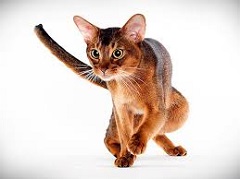
The different characteristics of many domestic cats or stray cats do not really depend on the breeders ability to select certain traits, but depend more on the transition from wilderness to life along humans. The domestication of various wild cat breeds represents a huge environment change that determines variations of the looks and behavior of the animals. Therefore, as a consequence, new breeds have appeared without any human intervention. The variety of behavior and appearance is a compulsory condition for the development and sustainability of a race.
Even the involuntary mutations, which can be verified through the feline population, are maintained and spread because they guarantee a certain advantage for the animal, helping it to adapt to a certain habitat. While certain cat breeds appeared as a consequence of the habitat they lived in, certain breed traits occurred through "accidental" genetic mutations that were passed on to future generations through natural inbreeding, without any human intervention.
The extremely short tail that can be found in Manx cats has spread through the feline population because of the geographic restriction rather than human will, while the Siamese breed is a perfect example of a spontaneous genetic mutation and not the result of years and years of artificial cross-breeding.
Besides the general characteristics, the most important features that differentiate cat breeds are the length and color of the fur coat. Cat coats usually consist of two layers: the insulation layer and the protection layer. The fur coat protects the animal from solar radiations, cold temperatures and irritations of the skin, but also maintains a steady body temperature. Moreover, some hair strains have a sensory role. Some important mutations in the basic hair structure were at the basis of the variety of breeds we have nowadays, resulting in: longhaired, shorthaired, single coated or hairless cats.
Although cats have been domesticated for 7000 years, we still have a lot to learn about their behavior, traits and needs. Of course everyone has heard about the Siamese and Persian cats, which are some of the most popular and old breeds, but not many know where they really came from and how they developed into what they are today. And knowing a little about the origins of your favorite cat breeds can mean a lot when it comes to properly tending to your pet's needs and building a strong relationship.




